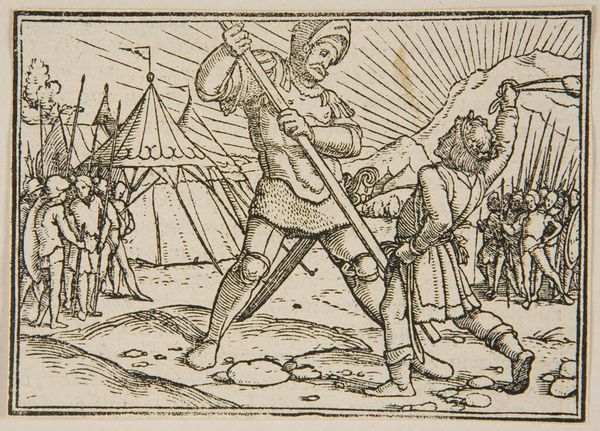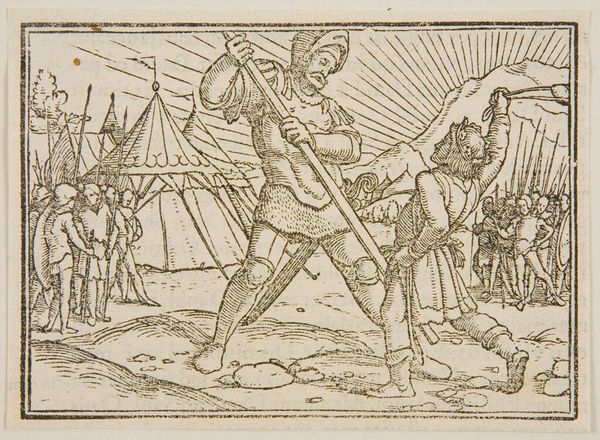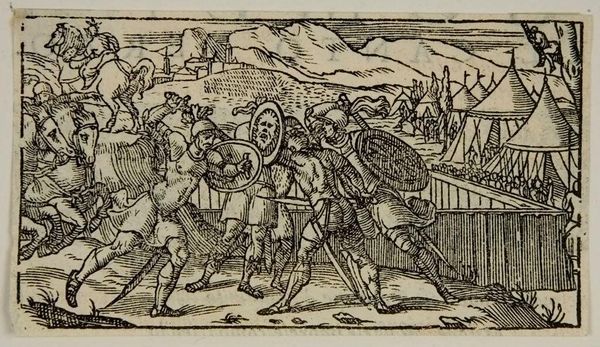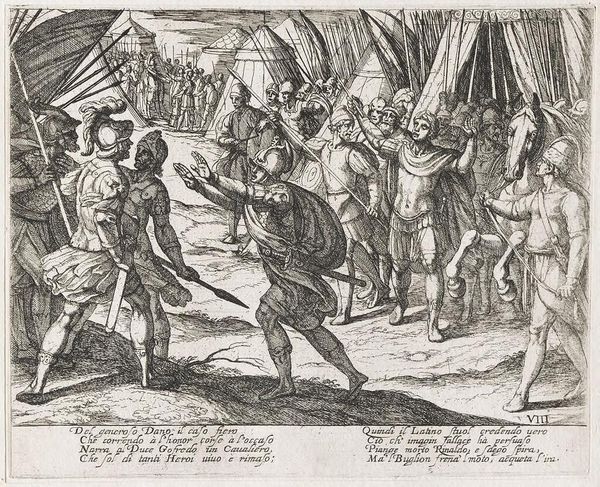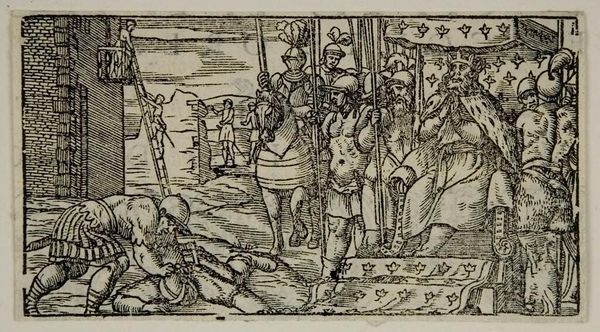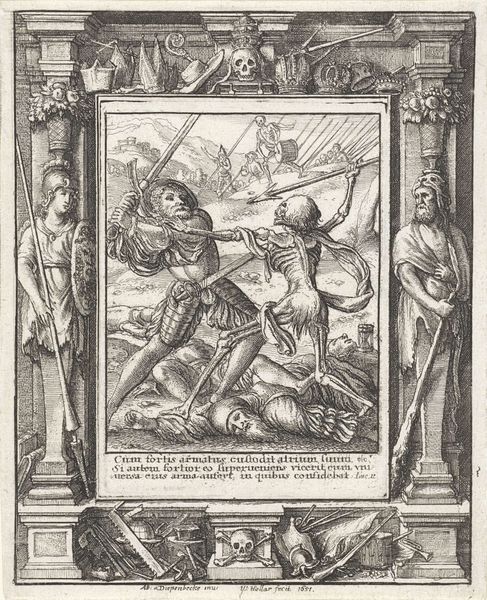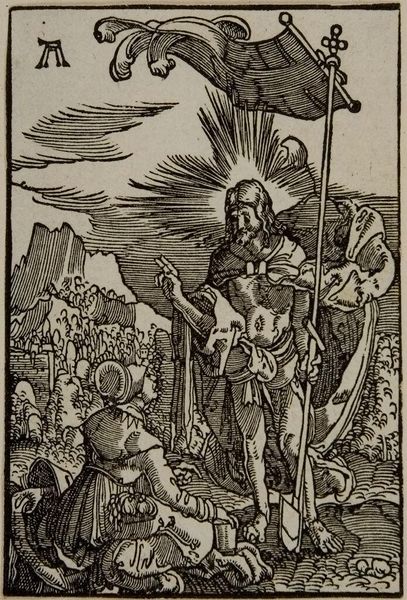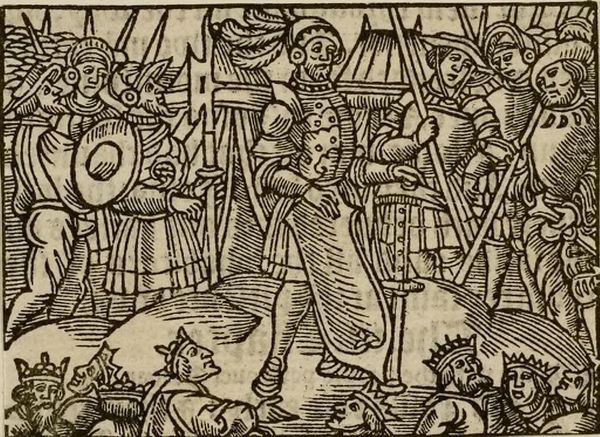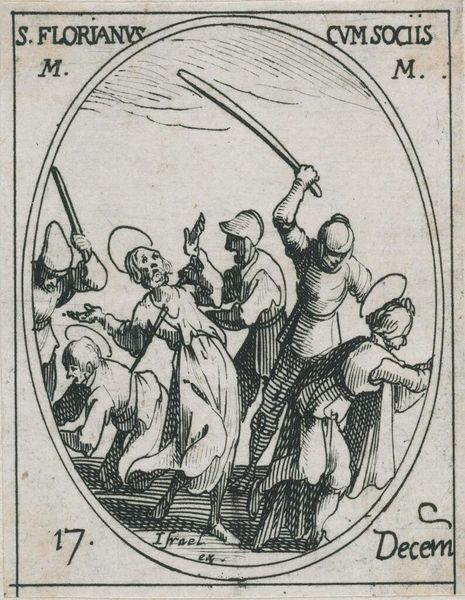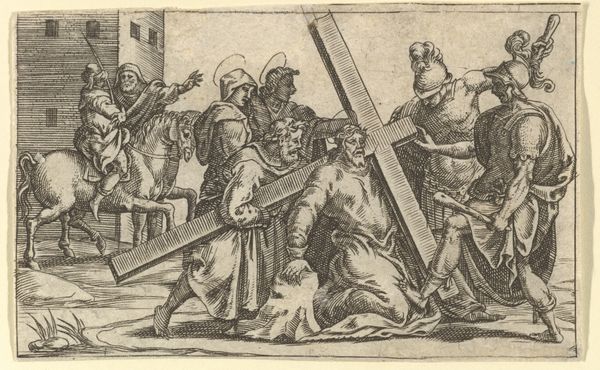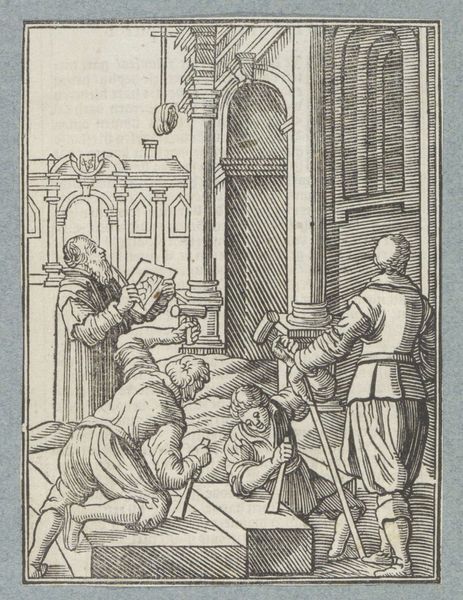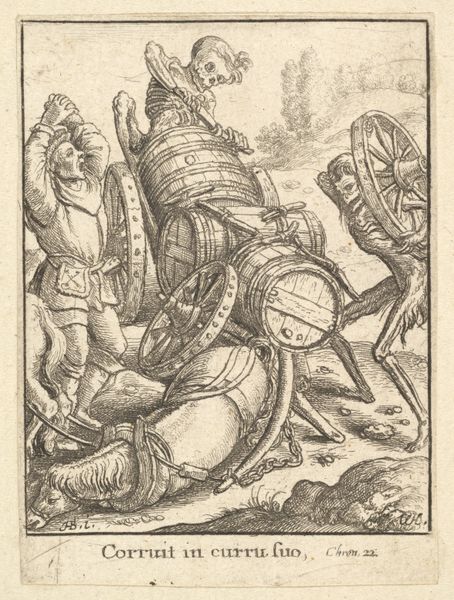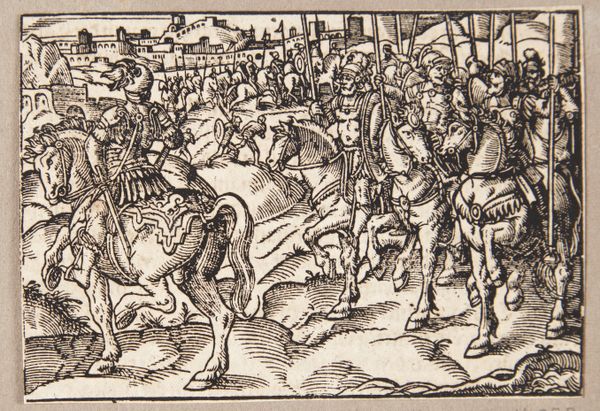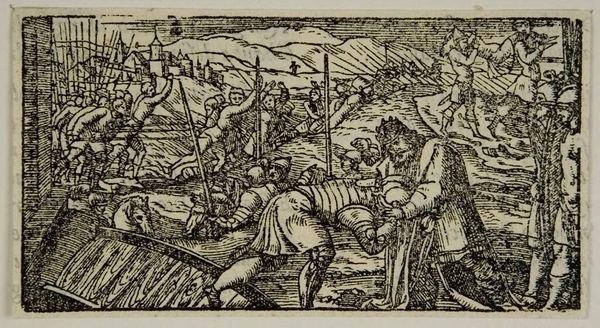
drawing, print, woodcut
#
drawing
#
narrative-art
# print
#
pen illustration
#
figuration
#
ink line art
#
11_renaissance
#
woodcut
#
history-painting
#
northern-renaissance
Dimensions: height 60 mm, width 85 mm, height 85 mm, width 99 mm
Copyright: Rijks Museum: Open Domain
Curator: This gripping image, "David Slays Goliath," dates back to 1538 and comes to us from the hand of Hans Holbein the Younger. The Rijksmuseum proudly holds this Northern Renaissance woodcut. Editor: The immediate impression is one of dramatic contrast. Goliath looms large, seemingly invincible, while David appears almost vulnerable, caught mid-motion. The harsh black lines heighten the sense of tension. Curator: Precisely. Holbein uses the woodcut medium to its fullest, the stark lines carving out the forms and adding to the intensity of the narrative. David's victory over Goliath carries immense symbolic weight, doesn't it? A testament to faith, courage, and the triumph of the underdog, themes very resonant during times of religious reformation. Editor: Indeed. The image becomes a vessel for anxieties about power and authority. One has to think of the context: printed images circulated widely. Consider the politics of the era, how this image might empower groups challenging established hierarchies. It's also interesting how Goliath's size isn't just literal. He’s monumentalized by the social structures that celebrate military might. David, in contrast, is a disruption to that power. Curator: Holbein masterfully uses the surrounding scene to enhance this sense. Notice the onlookers, almost faceless in their mass, watching the pivotal moment. And behind them, a vision of order implied by the neatly arranged tents contrasting the disorder of conflict. Do you see how the visual motif suggests the fragility of human power, of earthly power contrasted with the enduring significance of David’s divine assistance? Editor: A very compelling point. This interplay of vulnerability and power, enacted on the world stage with history as its backdrop, allows the narrative to continually address a complex variety of conditions well beyond the specifics of the story it relays. Even our presence here, discussing its potential significance nearly five centuries after its production. Curator: It speaks to the enduring nature of visual symbols and our need to engage with them across generations. I’m struck again by how Holbein renders the narrative not just as an historical account, but a timeless reflection of the human spirit's potential to overcome adversity. Editor: And in a way, David continues to slay Goliath through images like this.
Comments
No comments
Be the first to comment and join the conversation on the ultimate creative platform.
